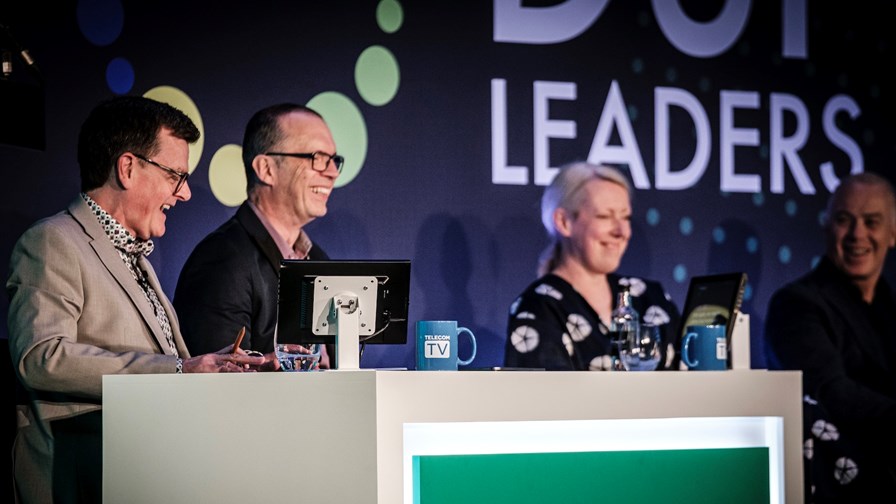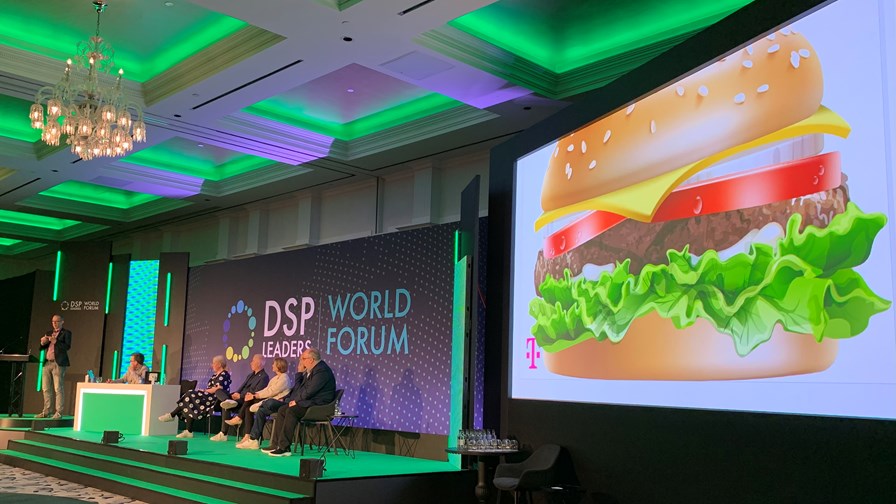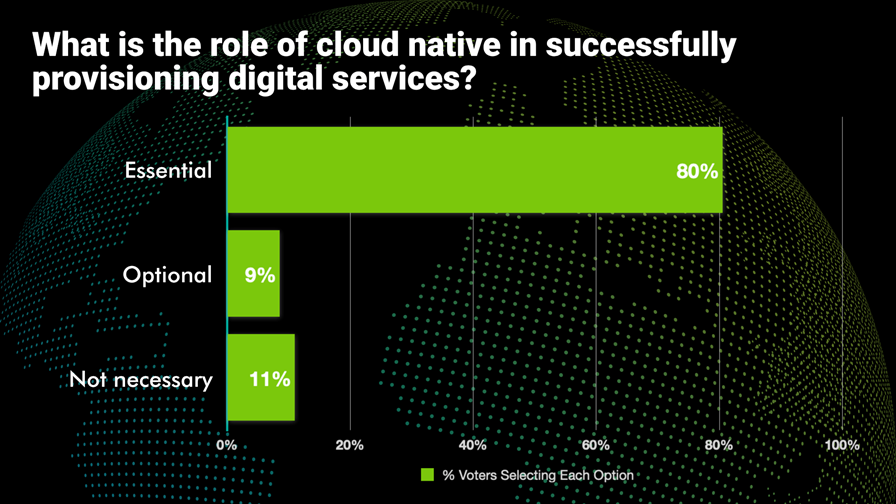
Who says cloud native isn't fun? TelecomTV's Guy Daniels (left), Deutsche Telekom's Franz Seiser (centre left), BT's Laura Murphy (centre right) and Colt's Mirko Voltolini get into the spirit of DSP Leaders World Forum.
- Deutsche Telekom’s Franz Seiser was the co-host for the cloud-native session at the recent DSP Leaders World Forum event
- He likened the cloud-oriented network architecture to a burger, with the network functions featuring as the tasty meat/plant-based patty
- But while technology and skills are important, the most critical thing to address as telcos adopt a cloud-native strategy is mindset, stated Seiser
WINDSOR, UK – DSP Leaders World Forum 2024 – Cloud native is a term on the lips of pretty much the whole telecom sector, not just because it’s regarded as vital to the operational survival of network operators but because its adoption is so challenging – and not just at a technology level, as Deutsche Telekom’s Franz Seiser noted during a recent address to attendees at this year’s DSP Leaders World Forum.
Seiser, who is VP, Tribe Lead T-DAT at Deutsche Telekom Technik, is right at the heart of the giant German telco’s network and operations transformation and brought that experience and insight to the event as co-host for the session titled Creating cloud-native software engineering teams.
He has been involved in DT’s Open RAN developments for the past few years but has recently switched roles “to eat my own dog food,” or drink his own champagne, as others might have it. “What does it mean? I have a long history in the journey of virtualisation and then cloudification, always trying to advocate that this is the route to go, but always at an architecture and strategy level,” he noted. Now, though, he is responsible for operations in Germany – for engineering, building and running all Telekom Deutschland’s platforms to manage and deliver customer data traffic. That puts him in charge of “mobile core, fixed control platforms – stuff like that… luckily, I have one team in there already that is cloud native because we are deploying 5G core for standalone.” This is currently being scaled for a large-scale consumer launch later this year.
But Seiser also manages teams that are working “in the classical mode… I can see the differences” and, as a result, see where the problems still lie with virtualised technology, which is often “still too close to what we had with [legacy] appliances,” noted the DT executive.
The German telco’s strategy is totally clear, though – to go cloud native… “We talk a lot about the telco as a platform and the platform, of course, is [a] cloudified production of network functions… Skills, of course, are important. You still need to have all your networking skills of course,” but now you need to add software skills to be able to deploy a 5G core and run it.
What you also need is the right architecture, noted Seiser, and the way DT thinks about the next-generation telecom network architecture is that it’s like a burger.
“I’m doing the network function, so of course I'm the meat, the most important, tasty piece – you can decide now if it’s vegan or real meat, but we are the juicy part of the thing,” joked Seiser, who was graciously allowed by the TelecomTV team to show one slide… and what a beauty it was!

Snacking on cloud native...
But you also have the bread bun and the fillings in between the two pieces of bun, he explained. The lower slice is the cloud layer, while the upper bread slice “is all the tools for automation management and orchestration.” All of these burger ingredients are platforms and that is important from an architecture perspective: “We have one cloud platform to produce all the network functions. We don't have vendor-specific silos, which we had to some extent in the virtualised environment.”
But for the cloud-native era, “we have one cloud layer for all the network functions and one set of tooling for automation… and that’s why the salad and tomatoes are so important” because they represent the adaptation needed for specific network functions to be able to interact with the cloud and to help build the automation capabilities, noted Seiser. “So in one burger you might have more tomatoes, [while] on the other you have more onions but no cheese, “depending on what the meat in between requires… but this is the architecture we are following.” Yum!
And the burger also comes with “a fundamental change in operating model because you’re not operating silos anymore – suddenly you’re operating platforms,” and the “most important thing you need to work on is not the skills, and it’s not technology – it’s the mindset of the people. Up to now they have been running their silos and they’re responsible for everything end to end. They don’t need to talk to anyone besides the [technology] supplier, which they need to beat up all the time... But suddenly they’re depending on other people, they need to talk to other people, they need to ask other people for help. This is a barrier you need to work on. This is the issue you really need to work on – the teams need to understand they can only be successful together,” noted Seiser.
That’s the real essence of going cloud native, “really bringing people to work together, to work as a team and split responsibilities so that in the end you can put the right operating model in place so you can run this whole thing and troubleshoot in the right way and still be able to produce the services in the stable manner. And why do we do that? We don’t do that to say ‘We are cloudified… [this] is not the means in itself.
“Cloud is a tool to become more flexible, to become faster, to enable automation… it forces much faster innovation cycles because suddenly we’re not talking about three big updates a year, we are talking about a software update every second week. So you can adapt much faster and take much smaller steps to adapt to requirements as they’re coming from the market: Try it out. If it doesn’t work, you roll it back… [with] this completely different level of flexibility. I call it software speed,” said Seiser as he took his co-host chair to discuss the opportunities that cloud native brings with his fellow session speakers from BT, Colt, Juniper Networks, the NGMN Alliance and Telecom Argentina.
You can watch the whole session here.
And what did the in-person and online audience think? Well, this need to shift mindsets and adopt cloud-native processes and operations is clearly deemed to be of great importance, as you can see from the result of the poll that was conducted alongside the session. For digital service providers, a change in mindset and a hunger for the architecture burger is vital for the successful provisioning of digital services.

- Ray Le Maistre, Editorial Director, TelecomTV
Email Newsletters
Sign up to receive TelecomTV's top news and videos, plus exclusive subscriber-only content direct to your inbox.




